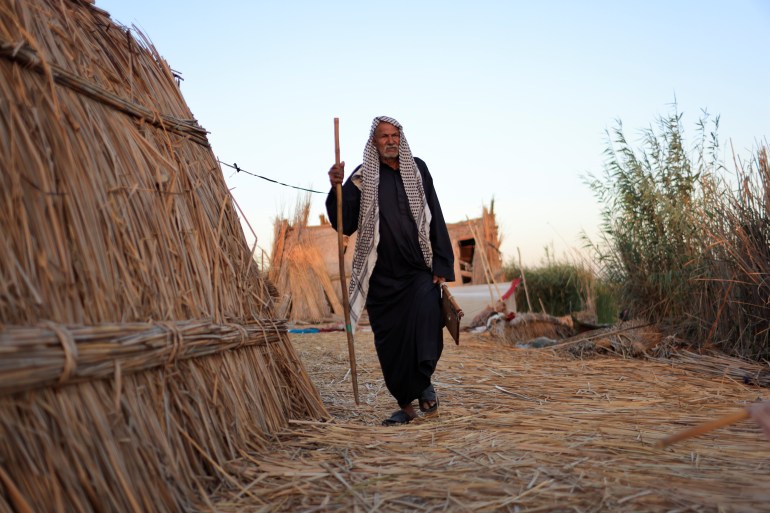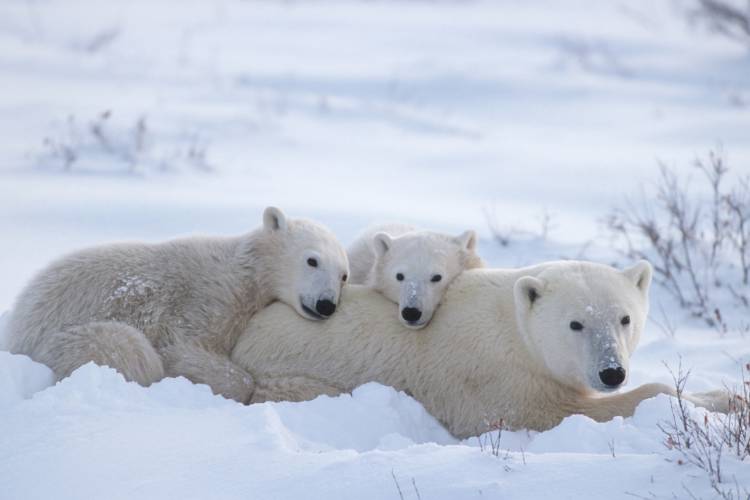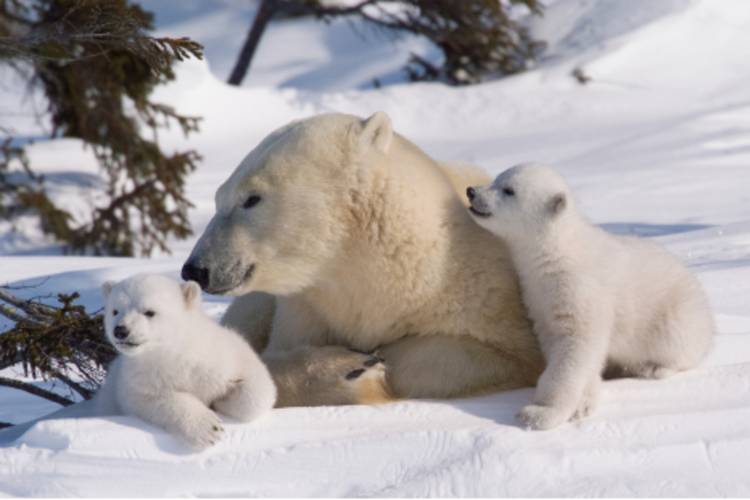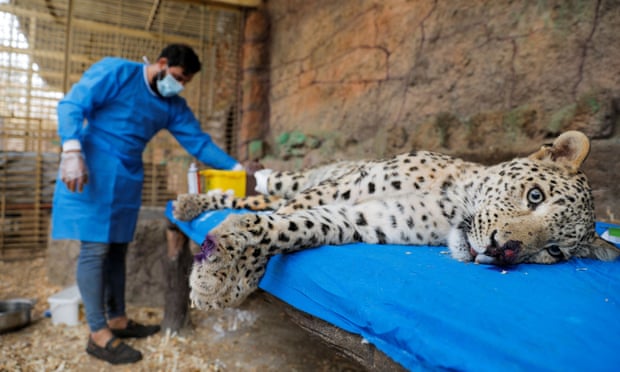Greta Thunberg: climate movementStudent and climate activist Greta Thunberg, 18, burst improbably onto the world stage in late 2018 when what began as a one-person school strike outside the Swedish parliament ended up galvanizing a global climate movement to demand immediate action to prevent environmental catastropheThunberg’s school strike spread in Sweden and around the world, inspiring a youth-led global climate strike movement, Fridays for Future, which urged cuts in carbon emissions. Her speeches at major political gatherings, including the World Economic Forum, the British Parliament, the U.S. Congress and, most recently, the United Nations climate summit known as COP26, have castigated leaders for failing future generations with their “fairy tales of eternal economic growth.” Or, as she said in one speech, “How dare you! You have stolen my dreams and my childhood with your empty words.”
Thunberg credits her Asperger’s syndrome, which is considered part of the autism spectrum, for her truth-telling and focus as a climate activist. She lives in Stockholm.
You called COP26 a “failure” and a “PR event.”Well, in the final document, they succeeded in even watering down the blah, blah, blah. Which is very much an achievement, if you see it that way. Of course it’s a step forward that, instead of coming back every five years, they’re doing it every year now. But still, that doesn’t mean anything unless that actually leads to increased ambition and if they actually fulfill those ambitions.
What do you mean when you say, “watering down the blah, blah, blah”?As we all know, or as we might know, the so-called “f-word” was included for the first time in this document: fossil fuel. Which makes you wonder what they have been doing these decades without even mentioning fossil fuels for a problem which, to a very, very large extent, is caused by fossil fuels. And instead of “phasing out” [coal, the document’s language became] “phasing down.” So, yeah, that is one very clear example.
And also, one question that was very up in the air was the question about finance for loss and damage and the Green Climate Fund, which they again failed to agree on. The money that has already been promised, the bare minimum that the so-called global north have promised that they will deliver, they failed to come to any conclusions, and it’s been postponed once again.
And what are positives that might have come out of COP26?One of the positives is that it shows that, under the current circumstances, within current systems, we won’t be able to solve the climate crisis unless there is massive pressure from the outside. Nothing will come out of these conferences unless there is a huge increase in the level of awareness and unless people actually go out on the streets and demand change. And these global events are a big opportunity to mobilize people and to redirect the focus onto the big climate crisis again and highlight the fact that nowhere near enough is being done about it.
I read recently that at the current rate of greenhouse gas emissions, we have 11 years until we get to 1.5 degrees Celsius change [the Paris agreement’s aspirational temperature threshold for heading off the worst impacts of climate change]. How do you get people to focus on that?Well, there are many different numbers that include many different things. But it’s just the principle that we need to understand: that we have a very limited time, that we are using up the carbon dioxide budget right now — no matter which carbon dioxide budget you go for — and that cannot be undone in the future. Yes, we may be able to come up with new technologies and scale them up so that we can absorb carbon dioxide from the air, but you cannot undo the damage that has been done if we trigger feedback loops and irreversible tipping points.
But also, we need to understand that 1.5 is not a safe level. Already, as it is now — 1.1 or 1.2 — people are already suffering. Countless people are already bearing the brunts of the climate crisis and have been doing so for a long time. So this is not just a future problem. We need to understand that this is here and now. It’s already happening — it has been happening for a long time — and many people have been bearing witness to this and trying to tell this, but they have been ignored.
Greta Thunberg with Ugandan climate activist Vanessa Nakate at the opening plenary of a Youth4Climate event ahead of COP26, the United Nations climate conference. (Luca Bruno/AP)
You’ve been very successful in getting energy and attention on this issue over the last few years. Can you talk about first becoming aware of the climate crisis yourself, and being galvanized to action?There’s a big difference between the first time I heard about the climate crisis and when I actually understood its consequences. I heard about it in school maybe when I was 7, 8 or 9. They teach the ground principles: the greenhouse effect, and it’s being amplified by us since we humans emit CO2 and so on. But then I read up on it more and more because it didn’t seem real that they’d explain it as a very big problem — but it wasn’t treated like one. It was kind of a long process because there’s a lot to read and a lot to understand. And based on the things that I read, I drew the conclusion that this was very, very serious.
[My actions] started small at home, like turning off the lamps when I wasn’t in the room and cutting down meat consumption and so on. And then I did more: I stopped flying, and I stopped buying new things. I became a vegetarian and a vegan. I tried to join organizations and marches and sign petitions and the things that they recommend us to do. But that didn’t have an effect.
Was there a moment you moved from personal actions to a bigger scale?I remember I was on a call with other young people who cared about the environment and were trying to figure out something to do, and we were going to plan a march. And then I thought, Okay, this could be something. And then I presented my idea of school striking, and they weren’t very keen on the idea. They didn’t think it was going to have an impact. They were like, “We can eat some cookies and drink coffee and tea and make it a pleasant event for young people to educate themselves about the climate crisis.” And I was like, “No, you clearly haven’t understood the climate crisis.
This is an emergency. This is not only supposed to be nice, this actually has to be something important.” And I think we who have the privilege and the opportunity to actually do something should go put ourselves out there. So I hung up on the call. Well, it was a Zoom call, so I just pressed “Leave Meeting” — so it wasn’t as dramatic as it would have been otherwise. But I hung up, and I decided to go on and do it by myself.
And that’s when you were 15, right?Yeah. I just thought that someone needs to do something. I need to do something more because this isn’t leading to anything. So I decided to school strike. And then many others did the same thing. And then we became a global movement.
But before that, when did the weight of the emergency hit you?It was just the cognitive dissonance that I saw with everyone around me. My parents, my classmates, everyone I met. They were like, “Oh, what are your interests?” And I said, “I’m interested in the climate because it’s an emergency.” They’re like, “Oh, that’s fun.” And I was like, “You clearly don’t get this.” Because everyone said, “I care about climate change. I think it’s very important.” And then they don’t do anything. And that got to me because I’m autistic, and I don’t like when people say one thing and then do another thing. I have to live true to my values, so to speak.
I remember one time I was talking to my dad, and he said, “I want to buy a new car. This SUV looks really nice.” And I was like, “But you said you cared about the climate.” He was like, “I do, but you can still do both.” And I was like, “No, you cannot.” And I got really upset.
You’ve quipped that if more people had autism or Asperger’s maybe we would do better in focusing on the climate crisis and not continuing to justify the trade-offs in our own minds.Of course not to romanticize autism or say that people should have autism. Because, under the wrong circumstances, autism can be something that holds you back. But I think that there are definitely many elements of what makes you autistic that more people should have. For example, us not having as much cognitive dissonance and being able to focus on facts, it’s a good thing. And being able to focus on an emergency and actually treat it as an emergency.
It feels like many today — neurotypical people, people in general — are so focused on following the stream, doing like everyone else, because they don’t want to stand out. They don’t want to be uncomfortable. They don’t want to cause any problems. They just want to be like everyone else. And I think that’s very harmful in an emergency where we are social animals. We’re herd animals. In an emergency, someone needs to say that we’re heading towards the cliff. And everyone is just following, saying like, “Well, no one else is turning around, so I won’t either.” That could be very dangerous.
Do you think one of the reasons you were so effective right away was because it was a shock to hear this small, young girl speaking uncomfortable truth to adults who were supposedly the experts?Well, there have been many, many young people — many people — who have been speaking out on this. I’m not the only one who has gained attention on this. But, of course, many people have listened to me. And I’m very privileged to come from a part of the world where I have the opportunity to use my voice and to be listened to. But we just go straight to the point.
We don’t care for the blah, blah, blah, so to speak. We say just what we want to be said. And we are not scared of being uncomfortable. We are not scared of being unpopular. We are ridiculed and mocked and hated on and sent threats — and that’s not something that should be romanticized in any way. But many are still going because we know that what we are doing is right. It’s just the idea of: We don’t care about our reputation; we care more about the planet.
There are clearly people interested in climate change who take a more diplomatic tack, aware that they have to compromise to get things done. Do you ever worry that the “blah, blah, blah,” or more combative rhetoric, makes their job harder when they’re trying to do the right thing, just from a more temperate position?If you choose, as the media often do, like, 20 seconds from a 10-minute speech and just look at those 20 seconds, it may seem like we have undemocratic views and that we are very populist and so on. Which is not true. So I understand that some people might think that way and that they frame it that way.
Of course we need compromises. But we have to also understand that we cannot compromise with the laws of physics. If we are here [gestures], and we need to be there [gestures again] to have, say, safe living conditions, and they are talking about moving [just a tiny bit], then I would rather say no. Yes, it’s better than nothing, but we have to zoom out and understand that we’re not going to get there if we pretend that this is enough.
Strategically, do you ever feel the need to change your tack these days, to say, “Okay, this is what people might expect me to say now, and so here’s a new way to shock people out of their complacency”?At the speech I gave in the U.N. General Assembly, I said, “How dare you!” Of course, I said many other things, but that was what people took out of it. And me being emotional and angry, yelling at world leaders. And then I thought that, Okay, now I have people’s attention, I will only speak facts. So in the speech [in Madrid] at COP25 after that, I basically only spoke about facts and numbers because so much attention was on that. And then people watched it, and it felt like no one understood a word I said. Because sometimes the news is just that I’m making a speech rather than what I have to say — very, very often. So that’s a way of trying to, I don’t know, surprise, if that’s the right word.
Are you inspired by any of the world leaders, by President Biden?If you call him a leader — I mean, it’s strange that people think of Joe Biden as a leader for the climate when you see what his administration is doing. The U.S. is actually expanding fossil fuel infrastructure. Why is the U.S. doing that? It should not fall on us activists and teenagers who just want to go to school to raise this awareness and to inform people that we are actually facing an emergency.
People ask us, “What do you want?” “What do you want politicians to do?” And we say, first of all, we have to actually understand what is the emergency. We are trying to find a solution of a crisis that we don’t understand. For example, in Sweden, we ignore — we don’t even count or include more than two-thirds of our actual emissions. How can we solve a crisis if we ignore more than two-thirds of it? So it’s all about the narrative. It’s all about, what are we actually trying to solve? Is it this emergency, or is it this emergency?
Thunberg at a climate march in Bristol, England, in February 2020. (Ben Birchall/PA Images via Getty Images)
You have become a hero to young people, yet you were bullied as a kid and socially isolated. It must be sort of complicated now that young people who previously didn’t support you or give you the time of day are putting you on a pedestal.
Yeah, I was scared of other young people when I first started school striking. So it was very weird to have other young people join me; it was a very strange feeling. Because I didn’t know how they would react and how they would think.
What can you tell other young people, both those experiencing bullying and maybe those doing the bullying, to help them move to a better place?Just to those who are experiencing it that you are not alone. There are many, many others who are experiencing this same thing — many more than you think — beneath the surface. And it should not be like that. Children can be very, very mean. But being strange is a good thing. I think most people in the climate movement are a bit strange — very much including myself. And that is a good thing because, if you’re not different, you are not able to envision another future, another world. And we need people who are able to think outside the box. So being different is something that should be celebrated.
Do you draw a connection between empathy for each other on a small level and empathy as a global community with climate change and climate justice?Of course. Since there are no binding agreements that safely put us towards a safe future for life on Earth as we know it, that means that we have to use morals, and we have to be able to feel empathy with one another. That is all we have right now. Some people say that we shouldn’t use guilt or this sense of morality. But that is, quite frankly, the only thing that we have to use. So, therefore, we have to use it. And we have to make sure that we don’t lose that connection. We have to realize that we’re in it for the long run and that we need to take care of each other.
As somebody who had been living in social isolation before speaking out, how did you handle both the positive adulation and the sometimes very personal negative criticism, even from world leaders, on Twitter and other places?I don’t know. I didn’t think too much about it. I just thought: I’m doing what is right, and as long as I’m doing what’s right, what I think is right, it doesn’t matter what others think. But of course it was a huge shift from never talking to anyone whatsoever — in those days, I only spoke to my parents and my teacher and my sister. So to then be speaking, more or less, to the whole world, it was a very big shift. I don’t think anyone in the world could have expected anything like that, no matter who you are or what you do. It just blew up completely in a way that is very hard to understand if you haven’t experienced it yourself. But I think just the fact that I was so different before made it easier to stay grounded and not to listen too much to what other people were saying, both positively and negatively.
Can you get to the place in your mind where you say, Okay, it’s 30 years hence, and we were successful? What does that look like? And then what do you get to focus on in your life?I have no idea. I try not to think about that too much. I try to rather do as much as I can in the now and change the future instead of overthinking the future. Hopefully we will take care of this, however that would look. But no matter what happens, if we continue to ignore it, the consequences are going to be much, much worse.
What do you do when you need a break?I take occasional breaks. Like, this is my life all day, every day, but that doesn’t mean I cannot focus on other things. I can focus on several things. For example, school. Although now we’re actually talking about the climate. So I can’t get away there, either!
So does the teacher just turn it over to you: “Greta …”?[Laughs.] We’re in climate role play. We’re going to represent different countries, and then we’re going to reenact a climate conference, make speeches and be delegates, try to come up with a resolution. And I’m going to be Saudi Arabia. I’m going to block everything. Yeah, I’m going to make sure that they don’t come up with a useless resolution.
After the experience of the last few years, its roller-coaster up and down, do you find yourself more or less hopeful than when you first sat out in front of the Swedish parliament with your [“SKOLSTREJK FOR KLIMATET”] sign?I don’t know. In one sense, we’re in a much worse place than we were then because the levels of CO2 in the atmosphere are higher and the global emissions are still rising at almost record speed. And we have wasted several years of blah, blah, blah.
But then, on another note, we have seen what people can do when we actually come together. And I’ve met so many people who give me very much hope and just the possibility that we can actually change things. That we can treat a crisis like a crisis. So I think I’m more hopeful now.
What can we learn from the pandemic about what can be accomplished when people do, in fact, treat a crisis like a crisis?I think many people have realized how important science is. Because we saw how, when we really wanted to find a vaccine, we could do that in, like, no time. Which just shows that, if we actually focus on something, if we actually want something, we can accomplish almost anything.
Right now, what’s holding us back is that we lack that political will. We don’t prioritize the climate today. Our goal is not to lower emissions. Our goal is to find solutions that allow us to continue life [as it is] today. And, of course, you can ask, “Can’t we have both?” But the uncomfortable truth is that we have left it too late for that. Or the world leaders have left it too late for that. We need to fundamentally change our societies now. If we would have started 30 years ago, it would have been much smoother. But now it’s a different situation.
But also, it has just shown how fast social norms can change. And I think that can be something that we can learn from it. If I would have gone up to someone and shaken hands with them during the worst part of the pandemic, that would have been totally unacceptable. But just before the pandemic, everyone did that. It changed, basically overnight, people’s mindsets. And that just shows the possibilities.
https://www.washingtonpost.com/magazine ... obal-en-GB






















/cloudfront-us-east-2.images.arcpublishing.com/reuters/AZOLLCCCP5JT7KRFISPRXZVLQQ.jpg)







